Copyright
About the Author
Preface
Acknowledgments
Contents
Part 1: INTRODUCTION
1: QUALITY IMPROVEMENT IN THE MODERN BUSINESS ENVIRONMENT
Chapter Overview and Learning Objectives
The Meaning of Quality and Quality Improvement
Dimensions of Quality
Quality Engineering Terminology
A Brief History of Quality Control and Improvement
Statistical Methods for Quality Control and Improvement
Management Aspects of Quality Improvement
Quality Philosophy and Management Strategies
The Link Between Quality and Productivity
Quality Costs
Legal Aspects of Quality
Implementing Quality Improvement
2: THE DMAIC PROCESS
Chapter Overview and Learning Objectives
Overview of DMAIC
The Define Step
The Measure Step
The Analyze Step
The Improve Step
The Control Step
Examples of DMAIC
Litigation Documents
Improving On-Time Delivery
Improving Service Quality in a Bank
Part 2: STATISTICAL METHODS USEFUL IN QUALITY CONTROL AND IMPROVEMENT
3: MODELING PROCESS QUALITY
Chapter Overview and Learning Objectives
Describing Variation
The Stem-and-Leaf Plot
The Histogram
Numerical Summary of Data
The Box Plot
Probability Distributions
Important Discrete Distributions
The Hypergeometric Distribution
The Binomial Distribution
The Poisson Distribution
The Pascal and Related Distributions
Important Continuous Distributions
The Normal Distribution
The Lognormal Distribution
The Exponential Distribution
The Gamma Distribution
The Weibull Distribution
Probability Plots
Normal Probability Plots
Other Probability Plots
Some Useful Approximations
The Binomial Approximation to the Hypergeometric
The Poisson Approximation to the Binomial
The Normal Approximation to the Binomial
Comments on Approximations
INFERENCES ABOUT PROCESS QUALITY
Chapter Overview and Learning Objectives
Statistics and Sampling Distributions
Sampling from a Normal Distribution
Sampling from a Bernoulli Distribution
Sampling from a Poisson Distribution
Point Estimation of Process Parameters
Statistical Inference for a Single Sample
Inference on the Mean of a Population, Variance Known
The Use of P-Values for Hypothesis Testing
Inference on the Mean of a Normal Distribution, Variance Unknown
Inference on the Variance of a Normal Distribution
Inference on a Population Proportion
The Probability of Type II Error and Sample Size Decisions
Statistical Inference for Two Samples
Inference for a Difference in Means, Variances Known
Inference for a Difference in Means of Two Normal Distributions, Variances Unknown
Inference on the Variances of Two Normal Distributions
Inference on Two Population Proportions
What If There Are More Than Two Populations? The Analysis of Variance
An Example
The Analysis of Variance
Checking Assumptions: Residual Analysis
Linear Regression Models
Estimation of the Parameters in Linear Regression Models
Hypothesis Testing in Multiple Regression
Confidance Intervals in Multiple Regression
Prediction of New Response Observations
Regression Model Diagnostics
Part 3: BASIC METHODS OF STATISTICAL PROCESS CONTROL AND CAPABILITY ANALYSIS
5: METHODS AND PHILOSOPHY OF STATISTICAL PROCESS CONTROL
Chapter Overview and Learning Objectives
Introduction
Chance and Assignable Causes of Quality Variation
Statistical Basis of the Control Chart
Basic Principles
Choice of Control Limits
Sample Size and Sampling Frequency
Rational Subgroups
Analysis of Patterns on Control Charts
Discussion of Sensitizing Rules for Control Charts
Phase I and Phase II of Control Chart Application
The Rest of the Magnificent Seven
Implementing SPC in a Quality Improvement Program
An Application of SPC
Applications of Statistical Process Control and Quality Improvement Tools in Transactional and Service Businesses
6: CONTROL CHARTS FOR VARIABLES
Chapter Overview and Learning Objectives
Introduction
Control Charts for x and R
Statistical Basis of the Charts
Development and Use of x and R Charts
Charts Based on Standard Values
Interpretation of x and R Charts
The Effect of Nonnormality on x and R Charts
The Operating-Characteristic Function
The Average Run Length for the x Chart
Control Charts for x and s
Construction and Operation of x and s Charts
The x and s Control Charts with Variable Sample Size
The s2 Control Chart
The Shewhart Control Chart for Individual Measurements
Summary of Procedures for x, R, and s Charts
Applications of Variables Control Charts
7: CONTROL CHARTS FOR ATTRIBUTES
Chapter Overview and Learning Objectives
Introduction
The Control Chart for Fraction Nonconforming
Development and Operation of the Control Chart
Variable Sample Size
Applications in Transactional and Service Businesses
The Operating-Characteristic Function and Average Run Length Calculations
Control Charts for Nonconformities (Defects)
Procedures with Constant Sample Size
Procedures with Variable Sample Size
Demerit Systems
The Operating-Characteristic Function
Dealing with Low Defect Levels
Nonmanufacturing Applications
Choice Between Attributes and Variables Control Charts
Guidelines for Implementing Control Charts
8: PROCESS AND MEASUREMENT SYSTEM CAPABILITY ANALYSIS
Chapter Overview and Learning Objectives
Introduction
Process Capability Analysis Using a Histogram or a Probability Plot
Using the Histogram
Probability Plotting
Process Capability Ratios
Use and Interpretation of Cp
Process Capability Ratio for an Off-Center Process
Normality and the Process Capability Ratio
More about Process Centering
Confidence Intervals and Tests on Process Capability Ratios
Process Capability Analysis Using a Control Chart
Process Capability Analysis Using Designed Experiments
Process Capability Analysis with Attribute Data
Gauge and Measurement System Capability Studies
Basic Concepts of Gauge Capability
The Analysis of Variance Method
Confidence Intervals in Gauge R & R Studies
False Defectives and Passed Defectives
Attribute Gauge Capability
Setting Specification Limits on Discrete Components
Linear Combinations
Nonlinear Combinations
Estimating the Natural Tolerance Limits of a Process
Tolerance Limits Based on the Normal Distribution
Nonparametric Tolerance Limits
Part 4: OTHER STATISTICAL PROCESS-MONITORING AND CONTROL TECHNIQUES
9: CUMULATIVE SUM AND EXPONENTIALLY WEIGHTED MOVING AVERAGE CONTROL CHARTS
Chapter Overview and Learning Objectives
The Cumulative Sum Control Chart
Basic Principles: The Cusum Control Chart for Monitoring the Process Mean
The Tabular or Algorithmic Cusum for Monitoring the Process Mean
Recommendations for Cusum Design
The Standardized Cusum
Improving Cusum Responsiveness for Large Shifts
The Fast Initial Response or Headstart Feature
One-Sided Cusums
A Cusum for Monitoring Process Variability
Rational Subgroups
Cusums for Other Sample Statistics
The V-Mask Procedure
The Self-Starting Cusum
The Exponentially Weighted Moving Average Control Chart
The Exponentially Weighted Moving Average Control Chart for Monitoring the Process Mean
Design of an EWMA Control Chart
Robustness of the EWMA to Nonnormality
Rational Subgroups
Extensions of the EWMA
The Moving Average Control Chart
OTHER UNIVARIATE STATISTICAL PROCESS MONITORING AND CONTROL TECHNIQUES
Chapter Overview and Learning Objectives
Statistical Process Control for Short Production Runs
x and R Charts for Short Production Runs
Attributes Control Charts for Short Production Runs
Other Methods
Modified and Acceptance Control Charts
Modified Control Limits for the x Chart
Acceptance Control Charts
Control Charts for Multiple-Stream Processes
Multiple-Stream Processes
Group Control Charts
Other Approaches
SPC With Autocorrelated Process Data
Sources and Effects of Autocorrelation in Process Data
Model-Based Approaches
A Model-Free Approach
Adaptive Sampling Procedures
Economic Design of Control Charts
Designing a Control Chart
Process Characteristics
Cost Parameters
Early Work and Semieconomic Designs
An Economic Model of the x Control Chart
Other Work
Cuscore Charts
The Changepoint Model for Process Monitoring
Profile Monitoring
Control Charts in Health Care Monitoring and Public Health Surveillance
Overview of Other Procedures
Tool Wear
Control Charts Based on Other Sample Statistics
Fill Control Problems
Precontrol
Tolerance Interval Control Charts
Monitoring Processes with Censored Data
Nonparametric Control Charts
11: MULTIVARIATE PROCESS MONITORING AND CONTROL
Chapter Overview and Learning Objectives
The Multivariate Quality-Control Problem
Description of Multivariate Data
The Multivariate Normal Distribution
The Sample Mean Vector and Covariance Matrix
The Hotelling T2 Control Chart
Subgrouped Data
Individual Observations
The Multivariate EWMA Control Chart
Regression Adjustment
Control Charts for Monitoring Variability
Latent Structure Methods
Principal Components
Partial Least Squares
12: ENGINEERING PROCESS CONTROL AND SPC
Chapter Overview and Learning Objectives
Process Monitoring and Process Regulation
Process Control by Feedback Adjustment
A Simple Adjustment Scheme: Integral Control
The Adjustment Chart
Variations of the Adjustment Chart
Other Types of Feedback Controllers
Combining SPC and EPC
Part 5: PROCESS DESIGN AND IMPROVEMENT WITH DESIGNED EXPERIMENTS
13: FACTORIAL AND FRACTIONAL FACTORIAL EXPERIMENTS FOR PROCESS DESIGN AND IMPROVEMENT
Chapter Overview and Learning Objectives
What is Experimental Design?
Examples of Designed Experiments In Process and Product Improvement
Guidelines for Designing Experiments
Factorial Experiments
An Example
Statistical Analysis
Residual Analysis
The 2k Factorial Design
The 22 Design
The 2k Design for k ≥ 3 Factors
A Single Replicate of the 2k Design
Addition of Center Points to the 2k Design
Blocking and Confounding in the 2k Design
Fractional Replication of the 2k Design
The One-Half Fraction of the 2k Design
Smaller Fractions: The 2k–p Fractional Factorial Design
14: PROCESS OPTIMIZATION WITH DESIGNED EXPERIMENTS
Chapter Overview and Learning Objectives
Response Surface Methods and Designs
The Method of Steepest Ascent
Analysis of a Second-Order Response Surface
Process Robustness Studies
Background
The Response Surface Approach to Process Robustness Studies
Evolutionary Operation
Part 6: ACCEPTANCE SAMPLING
15: LOT-BY-LOT ACCEPTANCE SAMPLING FOR ATTRIBUTES
Chapter Overview and Learning Objectives
The Acceptance-Sampling Problem
Advantages and Disadvantages of Sampling
Types of Sampling Plans
Lot Formation
Random Sampling
Guidelines for Using Acceptance Sampling
Single-Sampling Plans for Attributes
Definition of a Single-Sampling Plan
The OC Curve
Designing a Single-Sampling Plan with a Specified OC Curve
Rectifying Inspection
Double, Multiple, and Sequential Sampling
Double-Sampling Plans
Multiple-Sampling Plans
Sequential-Sampling Plans
Military Standard 105E (ANSI/ASQC Z1.4, ISO 2859)
Description of the Standard
Procedure
Discussion
The Dodge–Romig Sampling Plans
AOQL Plans
LTPD Plans
Estimation of Process Average
16: OTHER ACCEPTANCE-SAMPLING TECHNIQUES
Chapter Overview and Learning Objectives
Acceptance Sampling by Variables
Advantages and Disadvantages of Variables Sampling
Types of Sampling Plans Available
Caution in the Use of Variables Sampling
Designing a Variables Sampling Plan with a Specified OC Curve
MIL STD 414 (ANSI/ASQC Z1.9)
General Description of the Standard
Use of the Tables
Discussion of MIL STD 414 and ANSI/ASQC Z1.9
Other Variables Sampling Procedures
Sampling by Variables to Give Assurance Regarding the Lot or Process Mean
Sequential Sampling by Variables
Chain Sampling
Continuous Sampling
CSP-1
Other Continuous-Sampling Plans
Skip-Lot Sampling Plans
APPENDIX
Appendix I: Summary of Common Probability Distributions Often Used in Statistical Quality Control
Appendix II: Cumulative Standard Normal Distribution
Appendix III: Percentage Points of the X2 Distribution
Appendix IV: Percentage Points of the t Distribution
Appendix V: Percentage Points of the F Distribution
Appendix VI: Factors for Constructing Variables Control Charts
Appendix VII: Factors for Two-Sided Normal Tolerance Limits
Appendix VIII: Factors for One-Sided Normal Tolerance Limits
BIBLIOGRAPHY
ANSWERS TO SELECTED EXERCISES
INDEX
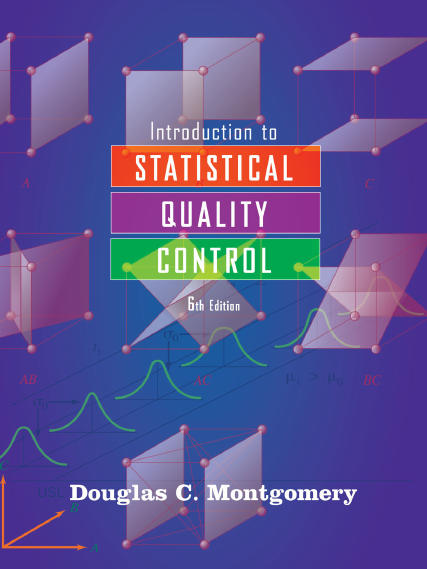

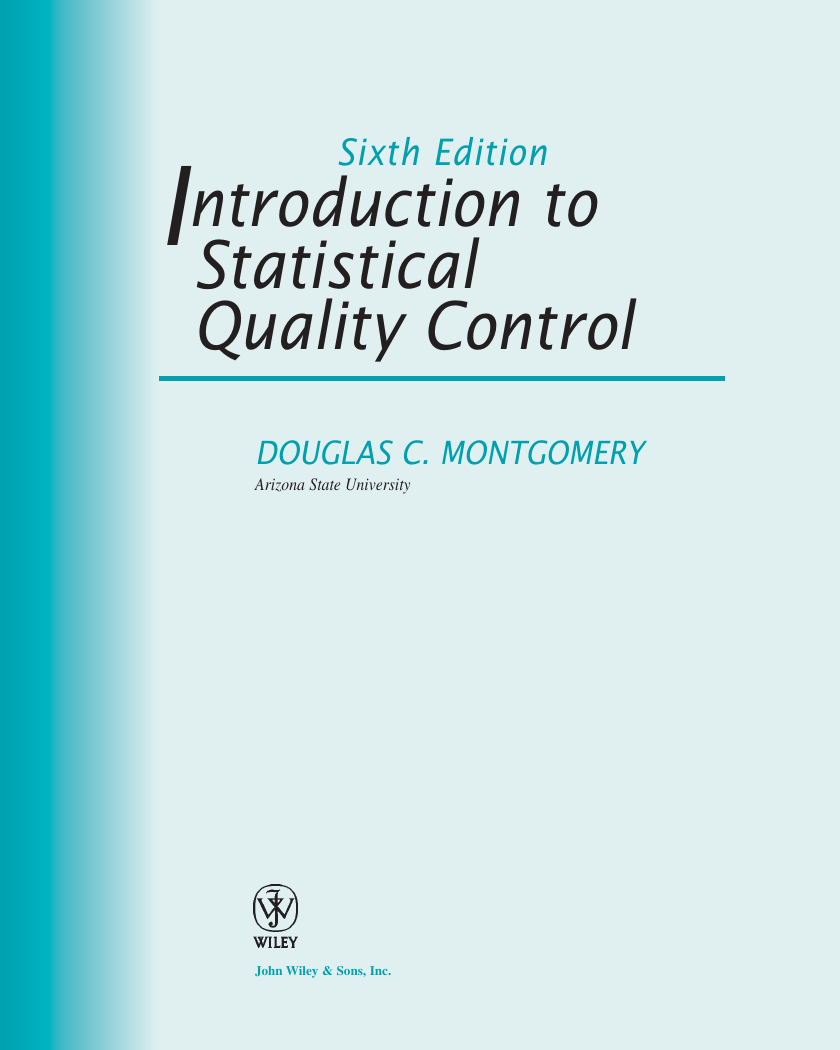
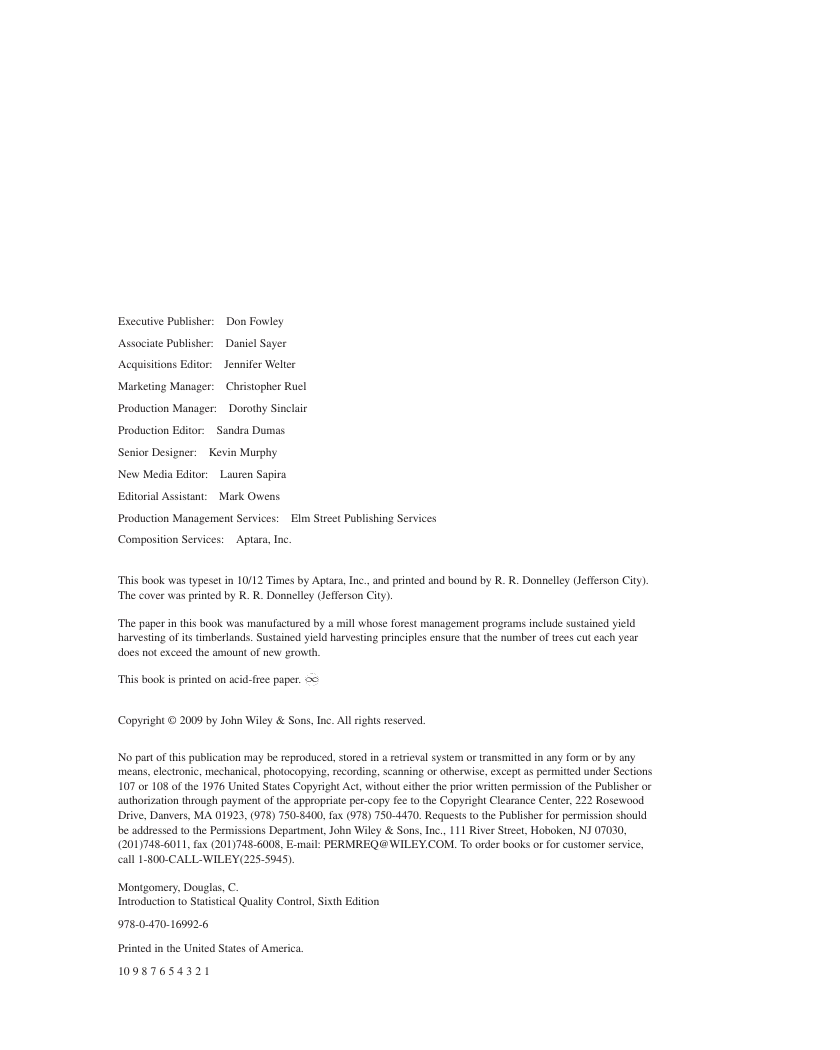
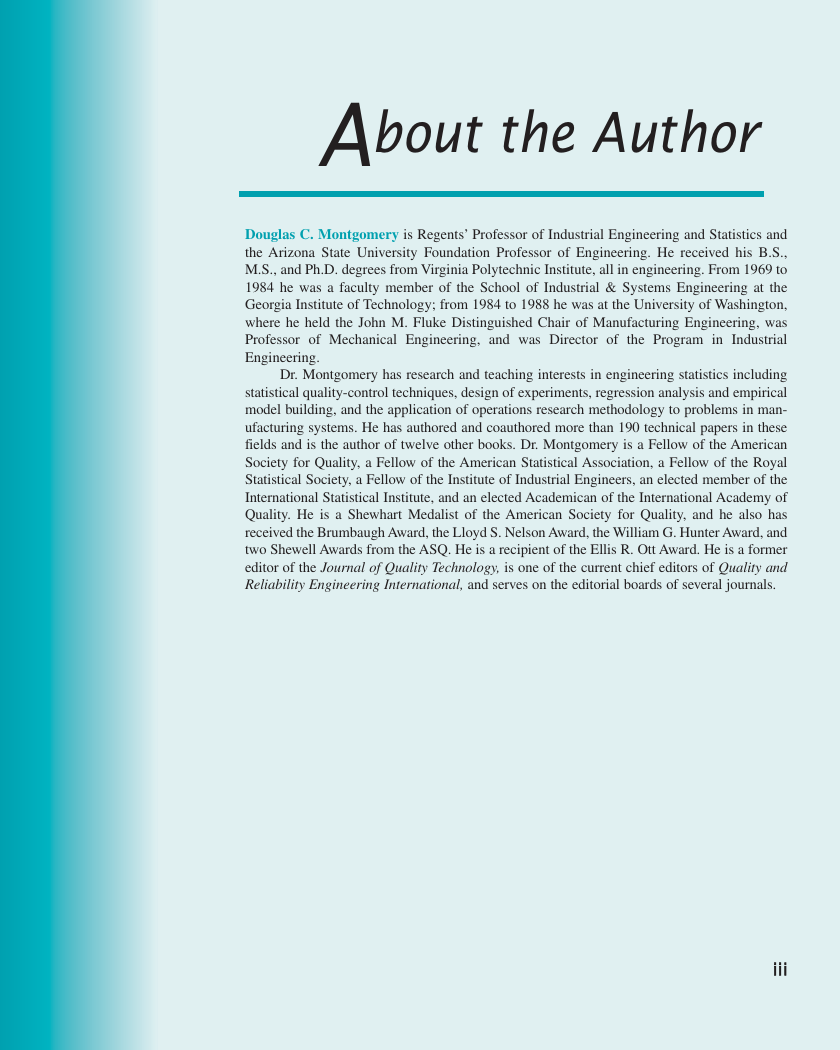

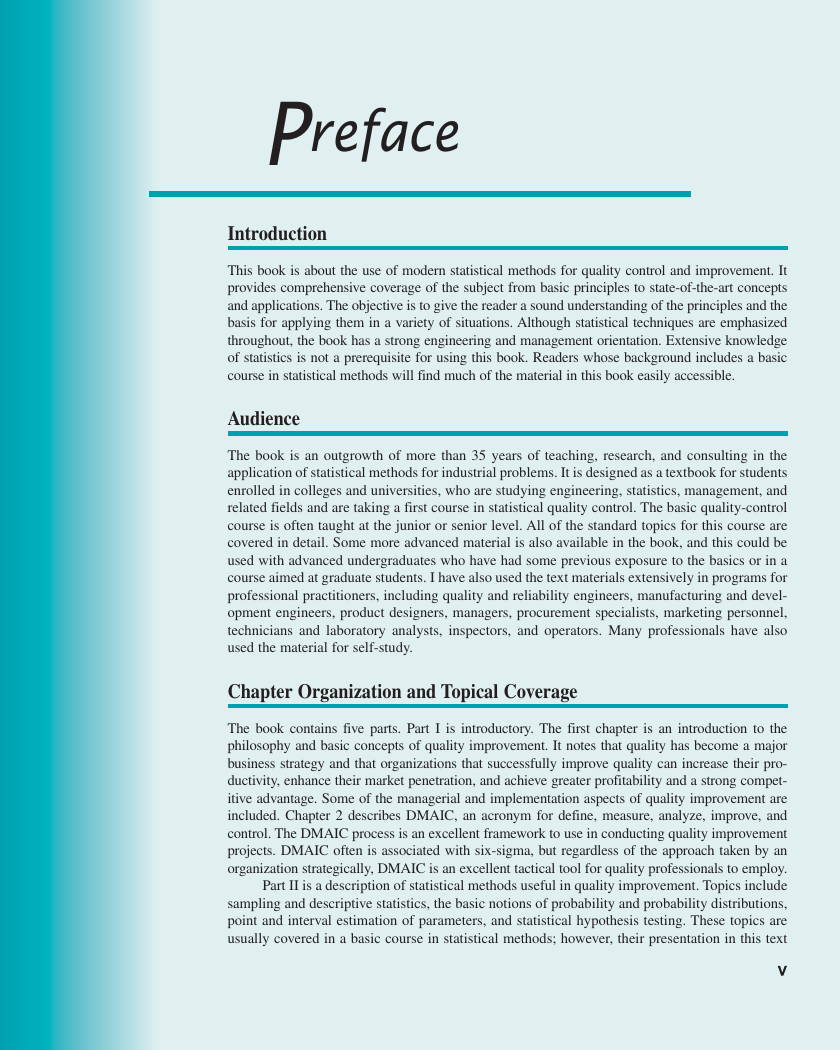
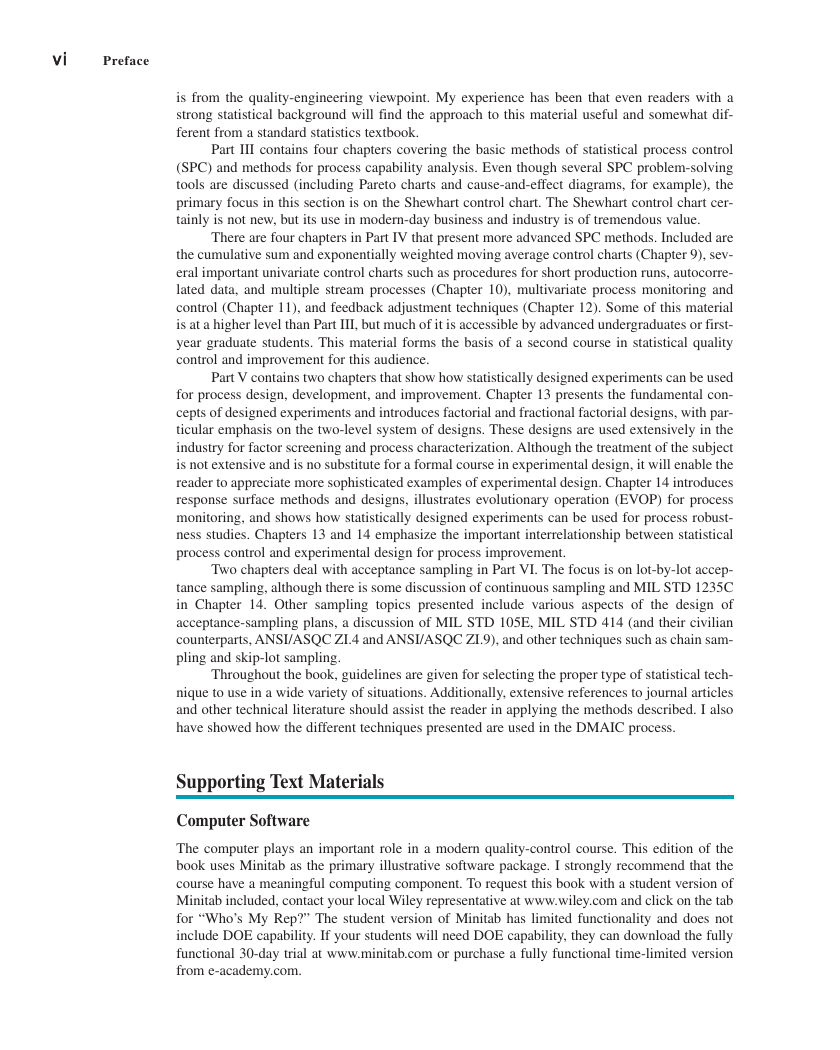








 2023年江西萍乡中考道德与法治真题及答案.doc
2023年江西萍乡中考道德与法治真题及答案.doc 2012年重庆南川中考生物真题及答案.doc
2012年重庆南川中考生物真题及答案.doc 2013年江西师范大学地理学综合及文艺理论基础考研真题.doc
2013年江西师范大学地理学综合及文艺理论基础考研真题.doc 2020年四川甘孜小升初语文真题及答案I卷.doc
2020年四川甘孜小升初语文真题及答案I卷.doc 2020年注册岩土工程师专业基础考试真题及答案.doc
2020年注册岩土工程师专业基础考试真题及答案.doc 2023-2024学年福建省厦门市九年级上学期数学月考试题及答案.doc
2023-2024学年福建省厦门市九年级上学期数学月考试题及答案.doc 2021-2022学年辽宁省沈阳市大东区九年级上学期语文期末试题及答案.doc
2021-2022学年辽宁省沈阳市大东区九年级上学期语文期末试题及答案.doc 2022-2023学年北京东城区初三第一学期物理期末试卷及答案.doc
2022-2023学年北京东城区初三第一学期物理期末试卷及答案.doc 2018上半年江西教师资格初中地理学科知识与教学能力真题及答案.doc
2018上半年江西教师资格初中地理学科知识与教学能力真题及答案.doc 2012年河北国家公务员申论考试真题及答案-省级.doc
2012年河北国家公务员申论考试真题及答案-省级.doc 2020-2021学年江苏省扬州市江都区邵樊片九年级上学期数学第一次质量检测试题及答案.doc
2020-2021学年江苏省扬州市江都区邵樊片九年级上学期数学第一次质量检测试题及答案.doc 2022下半年黑龙江教师资格证中学综合素质真题及答案.doc
2022下半年黑龙江教师资格证中学综合素质真题及答案.doc